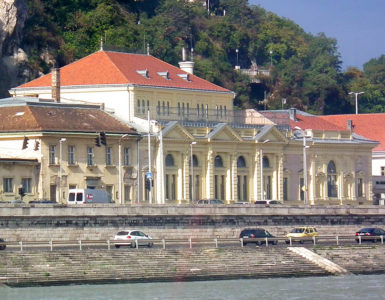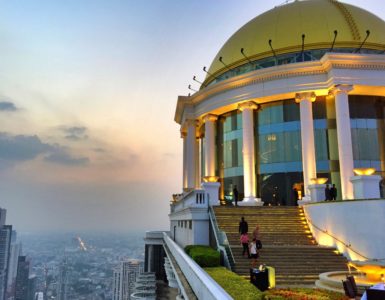The bus drops us in front of the tiny tourist office in Vestmanna, a village in the remote Faroe Islands. There’s not much inside — a restaurant serving fish soup, a gift shop selling plush puffins. Out back, a pier. At the pier, a tiny boat.
Our guide for the day is pleasant and earnest. She is trying her best, but her best consists of reading aloud a series of unrelated facts she’s typed into her iPad from guidebooks and Wikipedia. Because she has no sense of story, the information streams past us without making impressions or connections:
“This is our elderly home. 60% of our power comes from green resources. That’s the office of an oil drilling company. We attend school for nine years with a tenth year abroad. Fishing is our primary industry. We have our own parliament. We have 342 species of birds.”
She sticks to this script relentlessly, even when thick fog obscures the sites we’re passing.
So it is this woman who points to the smallest ship at the dock and says, “This is our boat that will take us to the Vestmanna bird cliffs.”
I’m shocked that she thinks sixteen of us (plus a few locals) can squeeze onto a small boat — particularly since we were promised a craft with interior seats and a few sets outside for the bold and hardy — you know, the sort of tourists who delight in having frost in their hair and taking hikes where the only food along the way is the lichen on the rocks.
With the exception of three tiny seats inside the captain’s nook, every single seat is an uncovered bench seat, exposed to the elements. I trudge onto the boat and take my place; immediately, my bottom is soaked with icy water. And then there’s the wind: a constant flow of chilly air, exactly like the foggy mist that creeps out of the freezer when you’re digging around for popsicles.
My ears go numb. My cheeks turn red. My bottom is prickly with goosebumps. After I sit here a minute or two — shivering, fretting — I hear for the first time that our boat ride is going to be a two-hour tour.
In this moment, it occurs to me that I don’t have to take this boat trip. I can get up, go back over the ladder to the pier, and wait in the little cafe for everyone else to return. I can use the wifi to update MadeByMark.com. I imagine myself sitting there with a cup of hot fish soup, writing a self-congratulatory post about how doing what you need to is the key to happy travel.
I get ready to tell Clyde about my decision. And in that moment, I see Clyde. In his little red hat and little red coat, he looks like a school kid on a class trip. Instead of thinking about the icy water soaking his bottom, he’s just soaking it all in.
Clyde is always more happy-go-lucky than I am. He is always making the best of things. And I’m afraid that, if I go back inside, he will feel obligated to go with me.
My heart breaks a little. So I take a deep breath, snuggle up against him, and choose to stay.
As we pull away from the pier, the captain hands out vinyl cloaks with hoods. These help with the wind and the mist, so I’m still chilly, but not as distracted by it. Minutes later, we’re passing nearly-vertical emerald cliffs, dotted with grey and white sheep. A local man tells us the animals hardly ever fall off into the churning sea — and then he hands out hard hats, because the rocks and boulders are apparently not as well balanced as the sheep.
Around a bend, the cliffs begin to be more and more vertical. Soon, they’re towering over us: 300 feet, 400 feet, 900 feet. When they are 2000 feet on either side of us, I lose my sense of scale completely. Tiny dots dance around near the summit: puffins and seagulls no bigger than grains of sand.
We pass through a pitch black cave and into a cathedral of towering stone, roaring surf, churning mist, and moss-covered rocks. The sea rises and falls beneath us like a wild animal. We could be on another planet — or on Earth, thousands of years before mankind. The space we’re in is timeless, sacred, eternal.
I feel very small.
Later, as the little boat docks, it occurs to me that I almost missed this amazing experience — all because of a little wind and water.
A lesson, then, that most guidebooks won’t give you: embrace a little discomfort along the way. In travel and in life, discomfort is often the harbinger of wonder.









Add comment